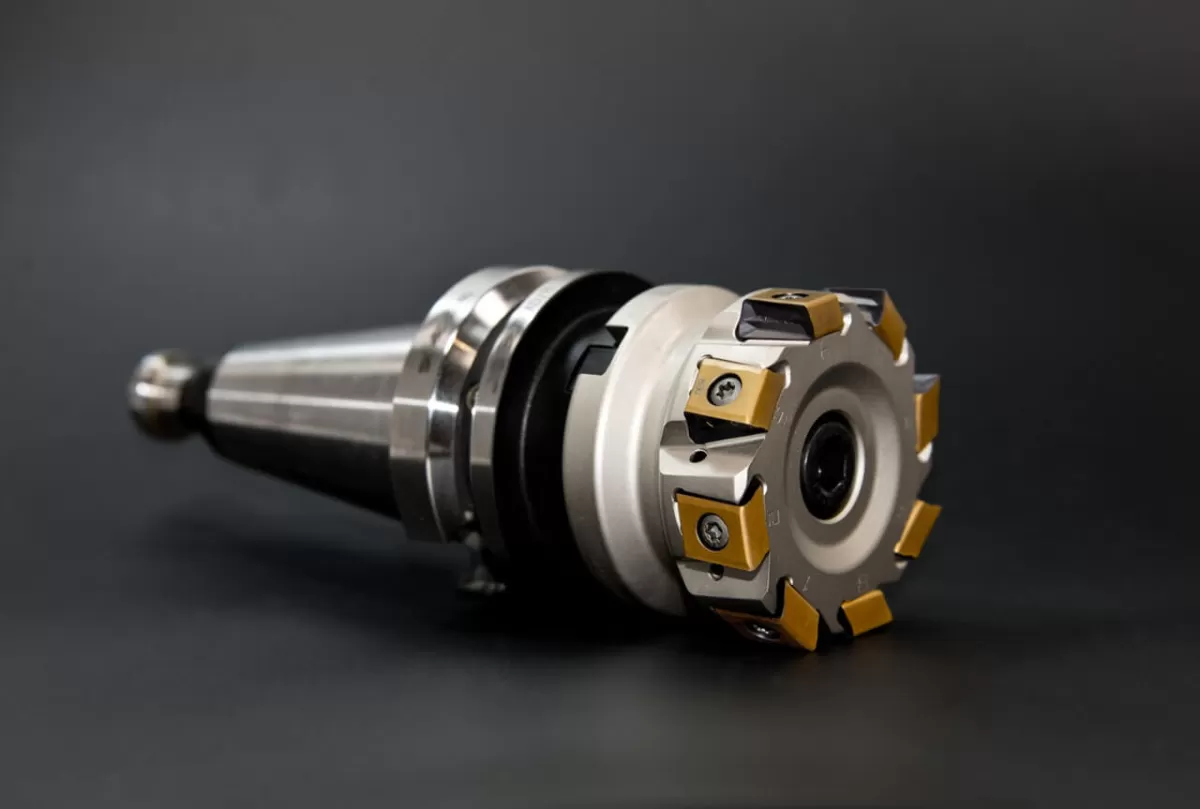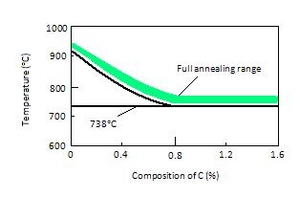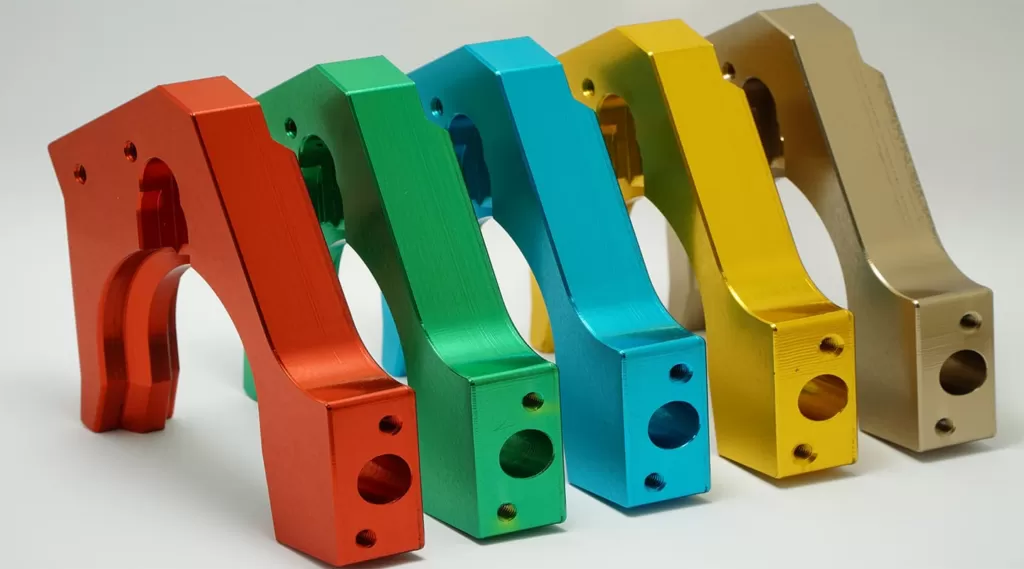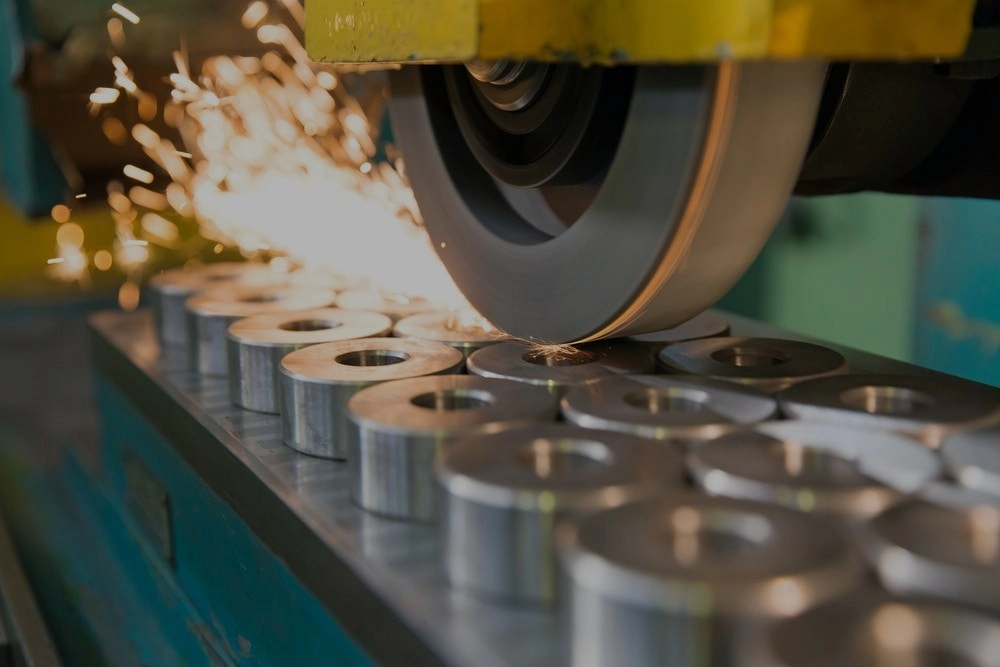The Annealing Process Explained
Definition of Annealing in Heat Treatment
Annealing is a heat treatment process used primarily in metalworking to alter the physical and sometimes chemical properties of a material. The goal is to improve material ductility, reduce hardness, and relieve internal stresses, making metals easier to work with during CNC machining and other manufacturing stages.
Key Stages of Annealing
The annealing process consists of three main stages that work together to enhance metals:
- Heating: The metal is slowly heated to a specific temperature where recrystallization can occur without melting the material.
- Soaking: The metal is held at this temperature for a period long enough to allow changes in the microstructure.
- Cooling: The metal is then cooled at a controlled rate, often slowly, to refine the grain structure and stabilize the material properties.
How Annealing Works
Annealing works by changing the internal microstructure of metals such as steel, aluminum, or copper. Heating the material to the right temperature allows atoms to move more freely, encouraging the formation of new, strain-free grains in a process called recrystallization. This reduces residual stress built up during previous manufacturing or machining processes and improves softness and malleability.
In CNC machining, annealed metals are easier to cut, shape, and finish, leading to better machinability improvement and overall enhanced product quality. For a deeper understanding of machining processes, check out our guide on what is CNC machining.
In : Annealing is a precise heat treatment designed to restore and enhance metal properties through controlled heating and cooling, making materials more workable and reliable in manufacturing environments.
Types of Annealing Processes in CNC Machining
Annealing is not a one-size-fits-all heat treatment process. Different types of metal annealing serve various purposes depending on the material and the desired results. Here are the main types used in manufacturing and CNC machining:
Full Annealing
Full annealing involves heating a metal to a specific temperature above its critical point and then cooling it slowly, usually in a furnace. This process:
- Softens the metal completely
- Restructures the microstructure for uniformity
- Improves material ductility and toughness
- Makes the metal easier to work with during later machining or forming
For parts that require significant shaping or extensive CNC machining, full annealing is often the go-to process.
Stress Relief Annealing
Stress relief annealing targets reducing internal stresses without changing the metal’s overall structure or hardness much. This is critical after welding, casting, or heavy machining where residual stresses can cause warping or cracks.
- Heats material to a moderate temperature below the critical point
- Holds it there to allow stress relaxation
- Slowly cools to avoid new stresses
This method enhances residual stress reduction and maintains dimensional stability, especially for precision CNC parts.
Process Annealing
Process annealing is performed during manufacturing to restore ductility lost from cold working or machining. It’s a quicker heat treatment done at a lower temperature than full annealing.
- Softens the metal slightly without full recrystallization
- Helps maintain machinability improvement during production
- Typically used with materials like copper and aluminum alloys
This process enables better handling of materials on CNC equipment without extensive downtime.
Other Types of Annealing
Some other variations include:
- Sub-critical annealing: Performed below the critical temperature to fine-tune properties.
- Spheroidizing: Specifically aimed at making steel easier to machine by creating a soft, globular carbide structure.
- Interrupted annealing: Involves controlled cooling or reheating cycles for specific microstructure goals.
Each type tailors the annealing process to specific manufacturing needs, optimizing material performance for CNC machining and finishing.
For a deeper dive into related manufacturing processes, check out our guide on What Is Metal Fabrication Technology.
Applications of Annealing in CNC Machining
Annealing plays a crucial role in CNC machining by making metals easier to work with and improving overall results. Here’s how annealing benefits the CNC machining process:
Enhancing Material Workability
By heating and slowly cooling metals, annealing softens the material. This boosts ductility and makes metals less brittle, so tools can shape and cut them more efficiently without cracking or breaking. This is especially important for harder metals that are tough to machine in their untreated state.
Reducing Residual Stresses
During manufacturing or welding, metals often develop internal stress, which can lead to warping or unpredictable behavior during machining. Annealing helps relieve these residual stresses, ensuring the material remains stable and easier to handle throughout the CNC process.
Improving Machinability
Annealed metals have a refined microstructure thanks to the recrystallization process, making them less resistant to cutting tools. This results in smoother cuts, less tool wear, and better surface finishes—key factors in precision CNC work.
HYCNC’s Role in Annealing
At HYCNC, we integrate controlled annealing treatments with our CNC machining services to provide parts that are easier to process and have consistent quality. Our expertise ensures the right heat treatment process is matched to each material type, improving turnaround times and minimizing machining challenges. This tailored approach helps U.S. manufacturers get better results at competitive prices.
Benefits of Annealing for Manufacturers
Annealing offers several advantages for manufacturers, especially in the metalworking and CNC machining industries. Here’s why many rely on this heat treatment process to improve their production quality and efficiency.
Improved Material Workability
Annealing softens metals by altering their microstructure through the recrystallization process. This increases material ductility, making metals easier to shape, bend, or form without cracking. For CNC machining, this means less tool wear and fewer machining errors.
Reduced Residual Stresses
Metals often develop residual stresses during fabrication or welding, which can lead to warping or part failure. Annealing relieves these stresses, enhancing the stability and dimensional accuracy of parts. This is crucial when precision is a must, like in aerospace, automotive, or medical device manufacturing.
Enhanced Machinability and Surface Finish
By modifying the metal’s internal structure, annealing can boost machinability, allowing for smoother cuts and better surface finishes. This reduces machining time and lowers costs, ensuring parts meet tight tolerances with better consistency.
Extended Tool Life and Lower Costs
Softer, stress-relieved metals cause less wear on CNC tools, which extends tool life and lessens downtime for tool changes. This cutting-edge efficiency translates to lower operating costs and faster turnaround times for manufacturers.
Consistency in Production Quality
Thanks to the controlled process of annealing, manufacturers achieve uniform microstructure alteration across batches. This consistency leads to fewer defects and improved overall product quality.
In , the annealing process plays a vital role in improving metal properties that matter most in CNC machining and fabrication. From stress relief annealing to full annealing, applying the right method can significantly elevate manufacturing outcomes.
For more on improving your machining process with heat treatment, see our guide on What is CNC Machining. Also, learning about Annealed Metal provides useful insights into how annealing impacts metal behavior.
Annealing vs Other Heat Treatment Processes
When working with metal annealing and related heat treatment processes, it’s important to know how annealing stacks up against others like tempering and normalizing. Each method serves distinct purposes, so choosing the right one depends on your project’s goals.
Annealing vs Tempering
Annealing is all about softening metal. It involves heating the material to a specific temperature and then cooling it slowly, which improves material ductility, reduces hardness, and relieves internal stresses through a recrystallization process. This makes the metal easier to work with during CNC machining or other fabrication.
Tempering, on the other hand, is performed after quenching (rapid cooling) and is designed to reduce brittleness while maintaining strength. It softens the metal slightly but doesn’t reach the softness that annealing achieves. Tempering improves toughness rather than machinability.
Annealing vs Normalizing
Normalizing also involves heating but cools the metal in air, quicker than annealing’s slow cooling. This process refines the grain structure, leading to a more uniform and tougher microstructure. However, it doesn’t reduce residual stresses or improve ductility as much as annealing.
In contrast, annealing focuses on stress relief and microstructure alteration to maximize softness and flexibility. Normalizing is better when you need a balance of strength and toughness rather than the soft, workable metal ideal for shaping and machining.
When to Choose Annealing
Consider annealing when:
- You need to soften hard metals before machining or forming.
- Reducing residual stresses is critical to avoid warping during manufacturing.
- You want to improve the machinability and workability of materials like steel or copper alloys.
- Preparing material for further processes, like welding or complex CNC operations.
If your goal is to increase toughness or balance strength with moderate softness, tempering or normalizing might be the better route. But when maximum ductility and stress relief matter most, annealing is the go-to heat treatment.
For those new to metal treatments in CNC machining, understanding these differences helps you get the best surface finish, precision, and durability. Learn more on how these treatments impact CNC work in our detailed guide on what is CNC machining.
Practical Tips for Annealing in CNC Machining

Annealing plays a big role in improving how materials behave during CNC machining. To get the most from metal annealing, keep these practical tips in mind:
Prepare the Material Properly
- Clean the metal surface before annealing to remove dirt, oil, and contaminants. This helps with consistent heat treatment.
- Know your material type since different metals need slightly different annealing temperatures and times.
Control the Heating and Cooling Process
- Heat slowly and evenly to prevent warping or cracking. Rapid changes in temperature can cause unwanted stress.
- Use controlled cooling, often cooling the metal inside the furnace rather than air-cooling immediately. This helps with uniform recrystallization and stress relief.
Choose the Right Annealing Type for Your CNC Job
- For parts that need stress reduction, stress relief annealing works best.
- For improving ductility and machinability, consider full annealing.
- Process annealing suits parts going through multiple manufacturing steps.
Monitor and Test After Annealing
- Always check the material’s microstructure and hardness post-annealing to ensure it meets your specs.
- Run a test cut if possible to see if machinability has improved as expected.
Work with Experienced CNC Service Providers
- Partnering with a CNC shop that understands annealing and machining ensures you get the best surface finish and dimensional accuracy.
- Experts like those at HYCNC can tailor annealing to your specific project, boosting efficiency and reducing scrap.
By following these tips, you can maximize the benefits of metal annealing in your CNC machining projects, leading to better quality parts and smoother production.
Why Choose HYCNC for Annealing and CNC Machining
When it comes to annealing and CNC machining services in the U.S., HYCNC stands out for several reasons that matter to manufacturers looking for quality and reliability.
Expertise in Heat Treatment Process
HYCNC combines deep knowledge of metal annealing with advanced CNC capabilities. This means your parts get precise microstructure alteration through annealing that boosts material ductility and machinability improvement. We don’t just machine parts; we prepare the metal so it performs better during and after machining.
Tailored Annealing Solutions
We understand that different projects require different annealing types — from full annealing to stress relief annealing. HYCNC customizes the heat treatment process based on your material and final product needs, ensuring optimal residual stress reduction without compromising strength.
Quality and Consistency
Our controlled annealing environment keeps temperature and timing precise, preventing defects and ensuring your parts have consistent surface finish and internal quality. This level of control supports smooth downstream processes and reduces waste.
Advanced CNC Machining Integration
Because we handle both annealing and CNC machining, transitions between treatment and manufacturing are seamless. This integration accelerates turnaround times, improves dimensional accuracy, and guarantees that your parts meet strict tolerance standards.
Reliable Partner for U.S. Manufacturers
HYCNC is trusted by manufacturers across industries for delivering efficient, cost-effective solutions right here in the United States. Our local presence means faster communication, better support, and compliance with U.S. standards.
Key Benefits When Choosing HYCNC
- Comprehensive annealing and machining service under one roof
- Optimized heat treatment for improved metal workability
- Reduced residual stresses leading to longer part life
- Precision CNC machining post-annealing for best results
- Quick turnaround with consistent quality control
By choosing HYCNC, you’re not just getting a CNC service provider—you’re partnering with a team that truly understands how to enhance your metal parts through effective annealing and machining combined. This makes your production smoother, parts stronger, and overall costs lower.




